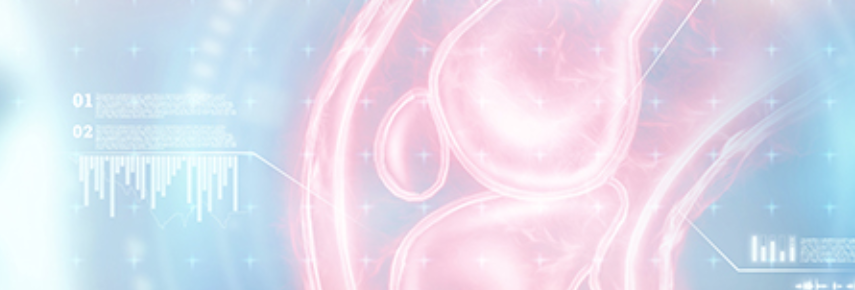Samuel Debono, Evangelos Tzolos, Maaz B J Syed, Jennifer Nash, Alexander J Fletcher, Marc R Dweck, David E Newby, Damini Dey, Rachael O Forsythe, Michelle C Williams
下载PDF
{"title":"腹主动脉瘤主动脉周围脂肪组织的 CT 衰减。","authors":"Samuel Debono, Evangelos Tzolos, Maaz B J Syed, Jennifer Nash, Alexander J Fletcher, Marc R Dweck, David E Newby, Damini Dey, Rachael O Forsythe, Michelle C Williams","doi":"10.1148/ryct.230250","DOIUrl":null,"url":null,"abstract":"<p><p>Purpose To assess periaortic adipose tissue attenuation at CT angiography in different abdominal aortic aneurysm disease states. Materials and Methods In a retrospective observational study from January 2018 to December 2022, periaortic adipose tissue attenuation was assessed at CT angiography in patients with asymptomatic or symptomatic (including rupture) abdominal aortic aneurysms and controls without aneurysms. Adipose tissue attenuation was measured using semiautomated software in periaortic aneurysmal and nonaneurysmal segments of the abdominal aorta and in subcutaneous and visceral adipose tissue. Periaortic adipose tissue attenuation values between the three groups were assessed using Student <i>t</i> tests and Wilcoxon rank sum tests followed by a multiregression model. Results Eighty-eight individuals (median age, 70 years [IQR, 65-78]; 78 male and 10 female patients) were included: 70 patients with abdominal aortic aneurysms (40 asymptomatic and 30 symptomatic, including 24 with rupture) and 18 controls. There was no evidence of differences in the periaortic adipose tissue attenuation in the aneurysmal segment in asymptomatic patients versus controls (-81.44 HU ± 7 [SD] vs -83.27 HU ± 9; <i>P</i> = .43) and attenuation in nonaneurysmal segments between asymptomatic patients versus controls (-75.43 HU ± 8 vs -78.81 HU ± 6; <i>P</i> = .08). However, symptomatic patients demonstrated higher periaortic adipose tissue attenuation in both aneurysmal (-57.85 HU ± 7; <i>P</i> < .0001) and nonaneurysmal segments (-58.16 HU ± 8; <i>P</i> < .0001) when compared with the other two groups. Conclusion Periaortic adipose tissue CT attenuation was not increased in stable abdominal aortic aneurysm disease. There was a generalized increase in attenuation in patients with symptomatic disease, likely reflecting the systemic consequences of acute rupture. <b>Keywords:</b> Abdominal Aortic Aneurysm, Periaortic Adipose Tissue Attenuation, CT Angiography ClinicalTrials.gov registration no. NCT02229006 © RSNA, 2024.</p>","PeriodicalId":21168,"journal":{"name":"Radiology. Cardiothoracic imaging","volume":"6 1","pages":"e230250"},"PeriodicalIF":3.8000,"publicationDate":"2024-02-01","publicationTypes":"Journal Article","fieldsOfStudy":null,"isOpenAccess":false,"openAccessPdf":"https://www.ncbi.nlm.nih.gov/pmc/articles/PMC10912871/pdf/","citationCount":"0","resultStr":"{\"title\":\"CT Attenuation of Periaortic Adipose Tissue in Abdominal Aortic Aneurysms.\",\"authors\":\"Samuel Debono, Evangelos Tzolos, Maaz B J Syed, Jennifer Nash, Alexander J Fletcher, Marc R Dweck, David E Newby, Damini Dey, Rachael O Forsythe, Michelle C Williams\",\"doi\":\"10.1148/ryct.230250\",\"DOIUrl\":null,\"url\":null,\"abstract\":\"<p><p>Purpose To assess periaortic adipose tissue attenuation at CT angiography in different abdominal aortic aneurysm disease states. Materials and Methods In a retrospective observational study from January 2018 to December 2022, periaortic adipose tissue attenuation was assessed at CT angiography in patients with asymptomatic or symptomatic (including rupture) abdominal aortic aneurysms and controls without aneurysms. Adipose tissue attenuation was measured using semiautomated software in periaortic aneurysmal and nonaneurysmal segments of the abdominal aorta and in subcutaneous and visceral adipose tissue. Periaortic adipose tissue attenuation values between the three groups were assessed using Student <i>t</i> tests and Wilcoxon rank sum tests followed by a multiregression model. Results Eighty-eight individuals (median age, 70 years [IQR, 65-78]; 78 male and 10 female patients) were included: 70 patients with abdominal aortic aneurysms (40 asymptomatic and 30 symptomatic, including 24 with rupture) and 18 controls. There was no evidence of differences in the periaortic adipose tissue attenuation in the aneurysmal segment in asymptomatic patients versus controls (-81.44 HU ± 7 [SD] vs -83.27 HU ± 9; <i>P</i> = .43) and attenuation in nonaneurysmal segments between asymptomatic patients versus controls (-75.43 HU ± 8 vs -78.81 HU ± 6; <i>P</i> = .08). However, symptomatic patients demonstrated higher periaortic adipose tissue attenuation in both aneurysmal (-57.85 HU ± 7; <i>P</i> < .0001) and nonaneurysmal segments (-58.16 HU ± 8; <i>P</i> < .0001) when compared with the other two groups. Conclusion Periaortic adipose tissue CT attenuation was not increased in stable abdominal aortic aneurysm disease. There was a generalized increase in attenuation in patients with symptomatic disease, likely reflecting the systemic consequences of acute rupture. <b>Keywords:</b> Abdominal Aortic Aneurysm, Periaortic Adipose Tissue Attenuation, CT Angiography ClinicalTrials.gov registration no. NCT02229006 © RSNA, 2024.</p>\",\"PeriodicalId\":21168,\"journal\":{\"name\":\"Radiology. Cardiothoracic imaging\",\"volume\":\"6 1\",\"pages\":\"e230250\"},\"PeriodicalIF\":3.8000,\"publicationDate\":\"2024-02-01\",\"publicationTypes\":\"Journal Article\",\"fieldsOfStudy\":null,\"isOpenAccess\":false,\"openAccessPdf\":\"https://www.ncbi.nlm.nih.gov/pmc/articles/PMC10912871/pdf/\",\"citationCount\":\"0\",\"resultStr\":null,\"platform\":\"Semanticscholar\",\"paperid\":null,\"PeriodicalName\":\"Radiology. Cardiothoracic imaging\",\"FirstCategoryId\":\"1085\",\"ListUrlMain\":\"https://doi.org/10.1148/ryct.230250\",\"RegionNum\":0,\"RegionCategory\":null,\"ArticlePicture\":[],\"TitleCN\":null,\"AbstractTextCN\":null,\"PMCID\":null,\"EPubDate\":\"\",\"PubModel\":\"\",\"JCR\":\"Q1\",\"JCRName\":\"RADIOLOGY, NUCLEAR MEDICINE & MEDICAL IMAGING\",\"Score\":null,\"Total\":0}","platform":"Semanticscholar","paperid":null,"PeriodicalName":"Radiology. Cardiothoracic imaging","FirstCategoryId":"1085","ListUrlMain":"https://doi.org/10.1148/ryct.230250","RegionNum":0,"RegionCategory":null,"ArticlePicture":[],"TitleCN":null,"AbstractTextCN":null,"PMCID":null,"EPubDate":"","PubModel":"","JCR":"Q1","JCRName":"RADIOLOGY, NUCLEAR MEDICINE & MEDICAL IMAGING","Score":null,"Total":0}
引用次数: 0
引用
批量引用

 求助内容:
求助内容: 应助结果提醒方式:
应助结果提醒方式:


